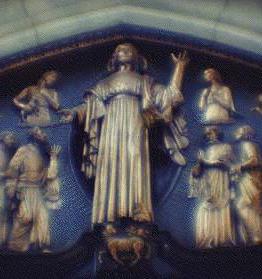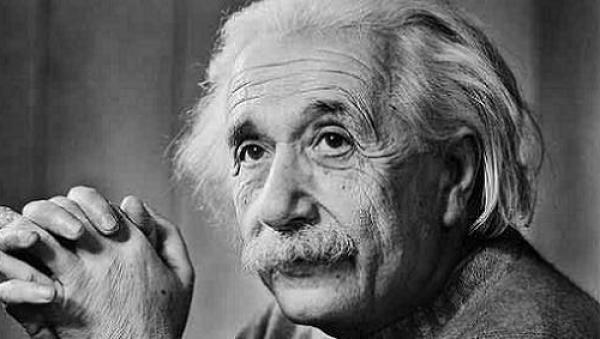Orientation in life, reflection, actions and human behavior are determined by the worldview. This is a rather complicated philosophical concept, which covers the psychological, cognitive, logical and social spheres of human existence. Different sciences define this phenomenon in their own way, philosophy seeks to unite all existing approaches, creating an integral concept.

Concept of worldview
Human consciousness has a complex structure, the basic part of which is the worldview. The main types of worldview are formed as the personality develops and are its integral part along with character. It is a concentrated idea of a person about the world, its experience, cognitive stock.
Worldview is a generalizing category, which means in philosophy that a person acquires a theoretical basis in ideas about life. It includes the results of a person's understanding of the global issues of being: on the meaning of life, on the concept of happiness, on what is good and evil, what is truth, etc. These are the most general principles of the existence of an individual person.
Signs of worldview
At the same time, the worldview, despite a pronounced subjective character, has historical and social aspects, therefore this phenomenon acts as a sign of the human species as a whole and has objective, generalized signs. The main characteristic of a worldview is its integrity, it is a complex formation, it is a form of social and individual human consciousness. It is also characterized by generalization, since from experience a person draws universal conclusions, explaining the universe.

Structure
Since a worldview is a complex formation, several levels are distinguished in it, at least two of them: these are types of worldviews of a theoretical and practical order. The former are the result of an abstract understanding of the most general principles of the existence of the world, which is usually formed in the course of training, philosophical and scientific knowledge, the latter are the ideas formed spontaneously about the order of things in the world, they are determined by individual experience. The components worldview structures are knowledge, interests, aspirations, principles, ideals, stereotypes, norms, beliefs.
The worldview, its types and forms are the result of a person's understanding of the surrounding reality. The main structural elements are world perception and understanding of the world as the implementation of two basic ways of mastering reality.
Worldview - the result of knowledge with the help of the senses, perceptions and emotions. Understanding is the result of a logical, rational comprehension of the facts of the objective and subjective worlds.

The complex process of formation
A person does not receive from birth all kinds of worldviews, they can only be formed in vivo. Socialization is directly related to the formation of a worldview. When a person begins to ask universal human and philosophical questions, then the worldview begins to take shape. This is a complex process that takes place in several planes simultaneously. A person accumulates experience and knowledge, interests and skills are formed in him, all this will become components of the worldview.
The main point in the formation of the worldview is the search for one's place in society, self-esteem and personality orientation play an important role here. Gradually, the system of assessments of the world and itself in it is fixed and goes into the category of beliefs and ideas, which form the basis of the worldview.
The process of forming a worldview is long, and perhaps even endless. It begins in childhood, when basic life ideas are laid and stereotypes are formed. In youth, a system of principles appears that will be the basis for human actions, and in adulthood, the crystallization of the worldview occurs, its awareness and correction. This process can last a lifetime. Education plays an important role. Various ways and types of worldview formation lead to the fact that it takes numerous forms and options.

Traditional worldviews
A broad view of the world is a worldview, it can develop spontaneously at the first stages, based on life experience, but it is usually exposed to social factors of influence, first of all, the family has the most important influence.
Traditionally, it is customary to distinguish such types of worldviews as the ordinary, philosophical, scientific, historical, religious, mythological. There are also attempts to distinguish types on various grounds, for example, an optimistic and pessimistic worldview, rational and intuitive, systemic and chaotic, aesthetic. There can be countless such examples.

Mythological worldview
Primitive awareness and assimilation of the world took different forms and types, a person’s worldview was formed on their basis. Mythological ideas about the world are characterized by syncretism and a metaphorical form. In undivided form they combine beliefs, knowledge, beliefs. That is why science, religion, philosophy grew out of myths at one time.
The mythological worldview is built on direct experience, a person could not penetrate deep into things even in the time of becoming, but he needed answers to the questions of being, and he creates a system of explanations, which he puts on in a mythopoetic form.
The mythological worldview is less characterized by knowledge, and to a greater extent by representation and belief. It reflects the irresistible dependence of man on the forces of nature. Mythological ideas come from primitive antiquity, but they do not disappear from the life of modern man - social mythology successfully uses the simplest explanatory mechanisms today. Each of us in our individual development goes through the stage of mythological knowledge, and the elements of the mythological worldview are relevant in any historical era.

Religious worldview
The mythological worldview is being replaced by a religious picture of the world. They have a lot in common, but a religious worldview is a higher stage of human development. If the mythological was based only on sensory images and expressed in the attitude, then the religious adds logical perception to sensory perception.
The main form of existence of a religious worldview is faith, and it is on this basis that the picture of the believer's world is based. It gives a person answers to the basic questions of being, relying not only on emotions, but also on logic. A religious worldview already contains an ideological component, establishes a causal relationship between phenomena, actions of people and the world.
The main types of religious worldview - Judaism, Islam, Christianity, Buddhism - embody different pictures of the world and ideals. Religion, in contrast to myth, not only explains the world, but also dictates certain behavioral rules. The religious picture of the world contains moral ideals and norms; this worldview is already being built in the course of answers to questions about the meaning of life and the place and significance of an individual in the world.
The central place in the religious worldview is held by the person and idea of God, he acts as the source of all phenomena and the main explanatory argument.A person is offered the only form of realization of religiosity - faith, that is, despite the presence of logic in religious texts, a picture of the believer’s world is still built on emotions and intuition.
Historical worldview
Mankind in the process of development undergoes significant changes in attitude and outlook. In this regard, we can talk about the worldview of various historical eras, which are associated with a dominant view of the world. So, antiquity is a time of dominance of aesthetic and philosophical ideals. They are the main landmark of a person in the perception of the world.
In the Middle Ages, a religious worldview prevails, it is faith that becomes a source of world understanding and answers to major questions. In modern times, the basis for the formation of a worldview is the scientific picture of the world, natural sciences answer the main questions of being in line with their discoveries and hypotheses.
The 19th century is the time of the formation of a multipolar picture, in parallel there are several philosophical and scientific concepts that become the main ideological principle for people. In the 20th century, the mosaic of worldviews is only growing, and today you can see that they are formed on various grounds - from mythological to scientific.
Ordinary worldview
The simplest kind of worldview is the ordinary, which combines ideas about everyday life. This is a part of consciousness that directly follows from a person’s experience. It is formed on the basis of sensory-emotional perception of the world.
The main source of ideas of everyday worldview - participation in practical activities, labor and social activity. A person observes the surrounding reality: nature, other people, and himself. He establishes the laws that become the starting points of the ordinary worldview. Often it is also called common sense. A characteristic feature of the everyday worldview is tradition. Today, the media are primarily responsible for its formation, and stereotypes are the main form of existence. Often it is realized in the form of superstitions, since it is based on ideas transmitted from generation to generation, not always confirmed by science or practice.
Philosophical worldview
Reflections on the meaning of life, on the foundations of being and the purpose of man lead us to the emergence of a philosophical worldview. It is constantly developing and expanding, like any theoretical knowledge, enriched with new thoughts. A characteristic feature of the philosophical worldview, in contrast to the mythological and religious, is based on knowledge. Philosophy proceeds from objective knowledge of the world, but interprets them through a subjective method - reflection. It is also characteristic of philosophical reflection to rely on the laws of logic, while operating with their categories and concepts. Philosophical worldview is characterized by systematicity, instead of sensory experience, the leading method of cognition is reflection.
Philosophical worldview Three evolutionary stages of formation have passed:
- cosmocentrism, when a search was conducted for answers to questions about the origin of the universe;
- theocentrism, the root cause of all things is God;
- anthropocentrism, when the problems of man come first, this stage lasts from the time of the Renaissance to the present.
The main types of philosophical worldview: idealism and materialism. They arose at the dawn of mankind. The idealistic worldview considers the ideal principle to be the main principle of the world: spiritual, mental, mental phenomena. Materialism, on the contrary, refers to the primary principle as matter, that is, things, objects and bodies. Thus, philosophy not only comprehends questions about a person’s place on Earth and its significance, but also reflects on the primary sources of the world.
Other types of worldview in philosophy are also distinguished: agnosticism, skepticism, and more private ones: positivism, irrationalism and rationalism, existentialism and others.
Scientific worldview
In the course of the development of human thought, new types of worldview appear. The scientific explanation of the world is presented in the form of general knowledge about its organization and structure. It seeks to answer the main questions of being reasonably and rationally.

Distinctive features of the scientific worldview: systemic and integrity, based on logic, and not on faith or feeling. It is based solely on knowledge, moreover, verified and confirmed, or on logical hypotheses. The scientific worldview answers questions about the laws governing the existence of the objective world, but, unlike other species, does not reflect on the attitude towards them.
Since the worldview is always realized in the form of values and life guidelines, science creates a cognitive reserve, which becomes the basis for behavior.








